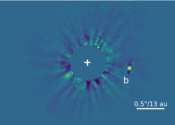Lack of massive black holes in telescope data is caused by bias
Our telescopes have never detected a black hole more massive than 20 times the mass of the sun. Nevertheless, we now know of their existence as dozens of those black holes have recently been "heard" to merge via gravitational ...









